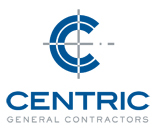Look around your home. Do you see room for improvement? Are you thinking about a new home addition? Envision what it would be like to have a little extra space, a new bathroom, home office, or some added distance from your crazy teenagers – whatever the case, the motivations for your home addition seem endless.

Your dream is possible. Using this post as your guide, let’s get started on planning your domestic sanctuary:
- Make a wish list: Gather pictures of custom homes and make a wish list of features that you love. Describe how this extra space will meet your needs. Do you need the space to work from home? Do you want to create an entertainment space for family and friends? Now that you’ve gathered a series of ideas, you have some references to share with your designer and builder. For another great reference on home planning, also check out Awaken a Dream Life with Custom Home Planning Tips.
- Research buildable space: So you want to take advantage of a sweeping vista. Just know, it may not be possible. Investigate whether there are factors that may prohibit your ability to build on your property. Areas to investigate include sewer systems, drainage, power, land grade, etc. You may come across a few challenges; realize that most of these hurdles can be overcome with a little engineering.
- Play by the neighborhood rules: Make sure to educate yourself on the neighborhood building codes and any legal restrictions. There may be setback restrictions that dictate how close a structure may be built on property lines. Other areas to investigate include building area ratios, historic preservation ordinances, height restrictions, and design covenants. Be a good neighbor by taking the time to familiarize yourself with the neighborhood building rules.
- Keep an open mind:When you come up with your wish list and share these references with your designer and builder, know that they may have a few creative ideas up their sleeve that may add greater value to your home project. These ideas may come in the form of a design solution or a reduced cost alternative. Develop an open exchange with your custom home addition team so that you don’t lose out on the latest means and methods that will exceed your expectations. For more on this subject, check out our post, 8 Steps to Optimize Your Next Project With Creative Value Engineering.
- Be consistent with the existing structure: When considering your home addition, make sure the exterior matches and/or compliments the existing structure. The interior space should also consider the style of your existing home. For example, if your home is a Tutor style, a modern addition may not be a good match.
- Think green! When you decide to add new materials, appliances, and casework consider all the environmentally friendly options that can be resourced locally, and recycled. There are so many great products to consider, including: radiant-heat flooring, instantaneous hot-water heaters, window shades, solar hot water and photovoltaic, certified sustainability harvested wood, natural fiber carpet, formaldehyde-free cabinets, cellulose or cotton blown-in insulation made from recycled paper, natural ventilation, metal siding, low-flow toilets, energy-miser light fixtures, and lighting controls and occupant sensors. Making a series of small eco-friendly choices can make a dramatic impact. If you like thinking green, you may also want to read, Get Turned On with Energy Efficiency Options for Custom Homes.
- Look at the surrounding landscape: Consider the area that surrounds your home addition. Observe the location of the trees, any outbuildings (barns, sheds, shacks, etc), sweeping vistas, areas of screening, and sunrise and sunset. Think about things you’d like to preserve, remove or relocate. Identify areas that need work around including any power lines, utility poles, underground fuel and septic tanks.
Hopefully, this post gave you a great start toward making your domestic sanctuary a reality.
Good luck!
